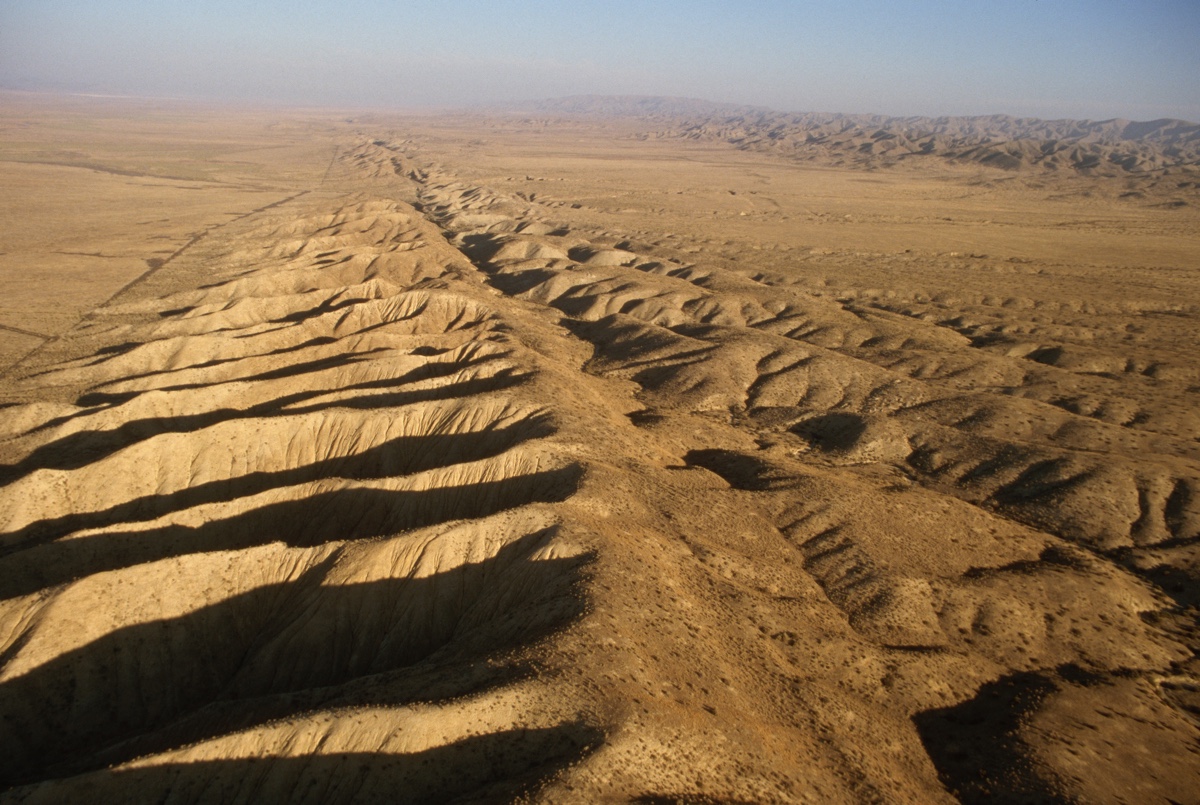Could Massive SoCal Earthquakes Trigger the 'Big One' on the San Andreas Fault?

Twin quakes — the biggest to hit Southern California in decades — rattled a parched stretch of the Mojave Desert on Thursday (July 4) and Friday (July 5), sending seismic waves rippling through Earth that could be felt from Los Angeles to San Jose.
Thankfully, no deaths were reported, partly because the two quakes hit a sparsely populated region of the Golden State. The ruptured faults were not part of the San Andreas Fault system, which snakes 800 miles (1,287 kilometers) from north to south along the coastline, where the North American and Pacific plates meet.
But is there a chance that these quakes could somehow transfer stress to the San Andreas Fault, potentially triggering the much feared "Big One" in one of the state's most populous cities? [Photo Journal: The Gorgeous San Andreas Fault]
It is theoretically possible, though there's no known link between the two fault systems, geophysicists say. And because there's still so much to learn about the complicated fault system that ruptured, it's difficult to say whether the San Andreas Fault took on additional stress from the recent quakes, they say.
Hidden faults
The magnitude-7.1 quake on July 5 ruptured a known portion of the Little Lake Fault zone, while the magnitude-6.4 quake that hit the prior day ruptured a previously unmapped region of the fault zone, Glenn Biasi, a geophysicist with the USGS in Pasadena, California, told Live Science in an email. If you look at a map of faults, you'd see that the Little Lake Fault zone and the San Andreas Fault zone are not very close together.
"We do not know of a definite relationship of these earthquakes to the San Andreas," Biasi said.
That said, geologists are still learning a lot about the Little Lake Fault zone.
Sign up for the Live Science daily newsletter now
Get the world’s most fascinating discoveries delivered straight to your inbox.
Many of the individual faults in this zone are active, "and because they are buried, we probably do not know them all. This area does not fit the textbook picture of sides of a plate sliding past one another," Biasi said.
Because these faults are so complicated and we know relatively little about them, it's hard to say how they will interact with the San Andreas. It is possible that the recent quakes added stress to the San Andreas Fault, though "we don't have a good way to assess the likelihood," said Michele Cooke, a geoscientist at the University of Massachusetts - Amherst.
"The San Andreas hasn't slipped in a long while. If the fault is loaded to the point where it is just about ready to slip, then it is possible that the recent earthquake could add just enough shear stress to the San Andreas to cause it to slip. Alternatively, the slip of these recent earthquakes could unclamp the San Andreas fault, making it easier to slip," Cooke told Live Science in an email.
Migrating stress?
Another intriguing possibility is that there's a bigger shakeup underground that these recent earthquakes are unmasking.
Some of the movement on the San Andreas Fault is migrating east, crossing the Mojave Desert and heading up the eastearn side of the Sierra Nevada mountain range, Biasi said.
Three big ruptures, including one in 1992, 1999 and the recent Ridgecrest quakes all seem to be aligned, and are part of what's known as the Eastern California Shear Zone (ECSZ), Cooke said. By contrast, the southern portion of the San Andreas Fault hasn't had a major rupture in 150 years, she said.
"Some suggest that we are seeing a migration of the active plate boundary away from the San Andreas Fault," Cooke said. "I'm not yet convinced of this, but I do think that this recent (geologically speaking) cluster of earthquakes in the ECSZ is very interesting."
- The 10 Biggest Earthquakes in History
- Image Gallery: This Millennium's Destructive Earthquakes
- Photo Journal: The Gorgeous San Andreas Fault
Originally published on Live Science.

Tia is the managing editor and was previously a senior writer for Live Science. Her work has appeared in Scientific American, Wired.com and other outlets. She holds a master's degree in bioengineering from the University of Washington, a graduate certificate in science writing from UC Santa Cruz and a bachelor's degree in mechanical engineering from the University of Texas at Austin. Tia was part of a team at the Milwaukee Journal Sentinel that published the Empty Cradles series on preterm births, which won multiple awards, including the 2012 Casey Medal for Meritorious Journalism.









